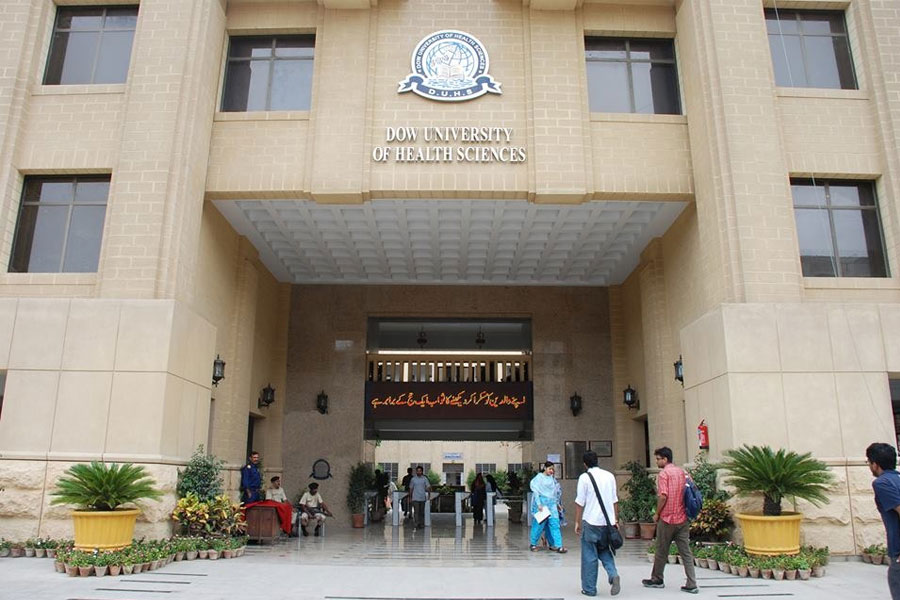- Only Dow Medical University from Sindh made it to the top 400 universities in Asia, while no university from Balochistan achieved a spot on the list.
- The performance of universities in Sindh and Balochistan, as per the Times Higher Education ranking for Asia, was highly unsatisfactory.
- Several universities in Pakistan, including Quaid-e-Azam University and COMSATS University Islamabad, achieved notable rankings within the top 200 universities in Asia.
Among the top 400 universities in Asia, only the Dow Medical University from Sindh managed to secure a spot, while no university from Balochistan made it to the list.
The performance of universities in Sindh and Balochistan, as per the Times Higher Education ranking for the Asia region, has been highly unsatisfactory.
On the other hand, Quaid-e-Azam University secured the 98th position, followed by the University of Management & Technology at 116, Government College University Faisalabad at 136, University of Engineering & Technology Taxila at 142, Abdul Wali Khan University Mardan at 149, and COMSATS University Islamabad at 174.
International Islamic University Islamabad was ranked 177, Hazara University Mansehra at 181, the University of Malakand at 186, Riphah International University at 196, the University of Agriculture Faisalabad at 201-250, Bahria University at 201-250, and Dow University of Health Sciences at 201-250.
Also Read:
Kiran Khatri Makes History as First Woman from Thar to Pass CSS Exam
Islamia University of Bahawalpur secured the 201-250 range, Lahore University of Management Sciences at 201-250, University of Engineering & Technology Peshawar at 251-300, University of Lahore at 251-300, and National University of Sciences & Technology at 251-300.
University of Peshawar was ranked 251-300, University of the Punjab at 251-300, University of Gujrat at 301-350, University of Sargodha at 351-400, Bahauddin Zakariya University at 351-400, PMAS Arid Agriculture University Rawalpindi at 351-400, and University of Veterinary & Animal Sciences Lahore at 351-400.
In Sindh, a budget of Rs24 billion has been allocated for 27 public universities, but unfortunately, all these universities are plagued by ad-hocism. The appointment of permanent vice chancellors has been delayed for many years, even at the University of Karachi, which happens to be the largest university in the country.
The Downfall of Pakistan’s Educational Institutes
In recent years, Pakistani educational institutes have witnessed a troubling trend of falling in rankings, reflecting the challenges and shortcomings faced by the country’s education sector. This decline in rankings raises concerns about the quality of education and calls for a comprehensive analysis of the factors contributing to this downward trajectory.
One key factor contributing to the decline is the insufficient funding allocated to educational institutions. Limited financial resources lead to inadequate infrastructure, outdated facilities, and a lack of modern teaching tools. Insufficient funding also affects research opportunities and the recruitment of highly qualified faculty members, further impacting the overall academic environment.
Another significant issue is the outdated curriculum and teaching methodologies. The global landscape of education has been evolving rapidly, emphasizing critical thinking, problem-solving skills, and practical application of knowledge. Pakistani institutions need to adapt their curricula to meet these evolving demands and equip students with the skills required in today’s competitive world.
Additionally, the lack of research and innovation culture within educational institutions is a major contributing factor. Research plays a pivotal role in advancing knowledge, fostering creativity, and driving economic growth. Pakistani universities need to prioritize research and innovation by providing incentives to faculty members and students, encouraging collaborations with industry, and fostering an environment that promotes intellectual curiosity.
Also Read:
Here’s How you can get Google Scholarships in Pakistan
Moreover, the absence of strong linkages between academia and industry poses a challenge. Collaboration with industries can lead to practical exposure, internships, and job opportunities for students, enhancing their employability and bridging the gap between theoretical learning and practical application.
Furthermore, issues such as political interference, lack of academic autonomy, and corruption within the education sector have hindered its progress. These challenges not only impact the rankings but also erode the credibility and reputation of educational institutions.
To address these issues and reverse the declining trend, a multi-faceted approach is required. This includes increasing investment in education, revising curricula to align with global standards, promoting research and innovation, fostering industry-academia collaborations, and ensuring academic autonomy and transparency.
By tackling these challenges head-on and implementing necessary reforms, Pakistani educational institutes can regain their standing and provide high-quality education that prepares students for the dynamic demands of the future. It requires a collective effort from the government, educational institutions, policymakers, and all stakeholders to create a positive transformation in the education sector and elevate the rankings of Pakistani educational institutes.
Share your thoughts with us below.
Stay tuned.
